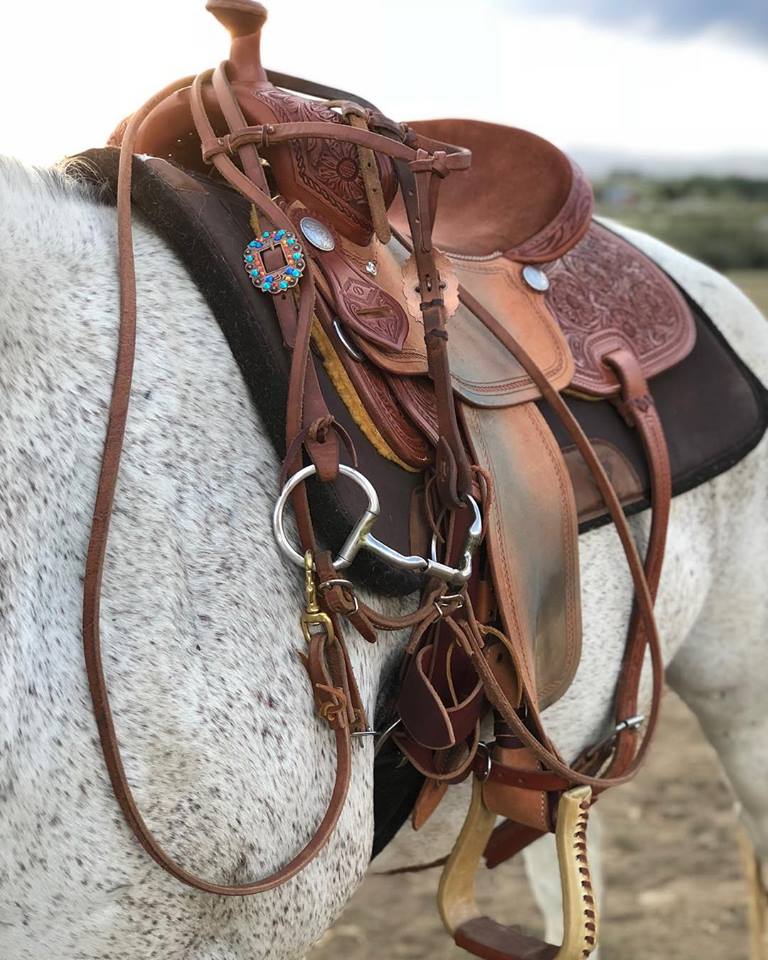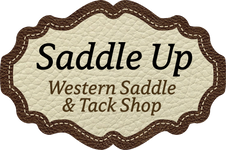Is Your Cinch The Right Length?
Posted by Lynnsy Johnson - Saddle Up on Oct 24th 2019
Ever since I can remember, cinch length was based off of how big your horse was. If someone said they had a 16 hand Quarter Horse, right off the bat people would suggest a 32" cinch or even longer just because the horse was 16 hands. However, there has been some breakthroughs that bring this old system into question. With time, everything evolves. We have touched on the topic of saddle fitting, training, and numerous subjects on how they have changed over the years. Now it's time to take a look at cinches.
The length of your cinch can affect your horse's performance, your saddle fit, and comfort for both horse and rider. Equipedic wrote an amazing article that we find eye opening about your cinch being too long. Every horse is built differently. A 16 hand horse can be more narrow/pettie, while a 14 hand horse can be extremely wide and stout. One thing that is the same on every horse is the widest point of their body is at the apex of the curve or their rib cage. If your cinch ends are above this spot, no matter how tight you pull, you will not be able to get enough grip to have a tight cinch. When a horse breathes, their ribcage/chest expands. When the cinch is sitting on that spot, it is restricting their ability to breathe. Essentially, you are choking your horse as you pull tighter and the cinch will not be able to stay snug. It is comparable to wearing a bra that is too small or a tight corset and then trying to take a deep breathe. It is uncomfortable and irritating. This makes it super difficult for your horse to perform at their best.
Ideally, your cinch should sit below the apex of the curve of the rib cage. The body will be sloping out towards the cinch and you won't have to pull as hard or as tight on your cinch. This also gives you immediate grip, no sliding, and no rolling. The most important thing is your horse can now breathe and feels way more comfortable.
In this article that we are referring to, there is a grey gelding pictured at the top for an example. This horse is 15.3 hands and 1200 pounds, but yet he is ridden in a 24" cinch. A very popular way of measuring cinch size is called The Golden Rule. You measure your horse's heart girth, divide it by 2, and subtract 3 to get your "correct" cinch size. They used this formula to see what the grey horse pictured would wear. According to The Golden Rule, this grey horse would be in a 41" cinch, when he is being ridden in a 24" cinch! That is crazy! A 41" cinch is considered draft size.
The correct way to measure your cinch size is by making sure the buckles of the cinch are clear of the elbow, but yet still below the apex of the curve of the rib cage. The lowest point your cinch should sit is 3-4" above the elbow. This allows clearance and no interference when riding. The best way to get an accurate cinch size is to take a string and hold it on one side 3-4" above the elbow. Then you run it under the horse, to the same point on the other side. You then measure it. This gives you a correct cinch size for that specific horse. Many people are surprised at the results. We have had several customers do this and they end up buying a 26" cinch when they were using a 34" cinch for their horse. Most horses are a 24-26" cinch, no matter what their height is.
Some signs that your cinch may be too long include your horse being cinchy and even turning to bite you when your are cinching up. It is uncomfortable to them and they know it is going to cause them irritation so they try to give you warning signs. This is also a very common sign of ulcers, so maybe check with your vet and rule those out first. If you are having to constantly adjust your saddle while riding or always having to get off and tighten your cinch, then that is a big indicator that your cinch is the wrong size. This relates back to the part in the article when they talk about not being able to grip. Your saddle may also slide forward, slide backward, or even roll from side to side while riding or when getting on. We have had so many customers come in for a saddle fitting because their saddle rolls. They think they are going to have to invest in a new saddle, when all along they just needed a shorter cinch. All of our employees have tested this theory and it has made a world of difference. I myself had issues with my saddle rolling when I worked at a sale barn. I would constantly have to get off my horse and tighten my cinch. I felt like I was going to cut my horse in half, but not even 30 minutes later my saddle would be rolling again. I dropped a few sizes and it totally fixed the problem.
It's insane to think something so small could make such a big difference. We understand everyone has their opinions and beliefs, but if you are experiencing any of these problems maybe give it a shot! To be honest just reading the article from Equipedic again, I think my one horse may need an even smaller cinch. In some cases, yes these signs can be from an ill fitting saddle, but it's worth purchasing a new cinch first, than a new saddle. Give it a try and let us know how it works for you! We want you and your horse to be happy and comfortable. If you have any questions regarding this topic, please feel free to reach out to us! I am also dropping the link to Equipedics article to give you more information on your cinch. Thanks for reading!

http://www.equipedic.com/How-To-Measure-Cinches-and-Girths_c_35.html
